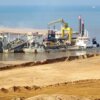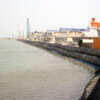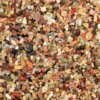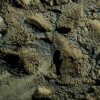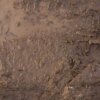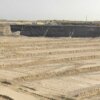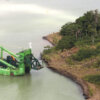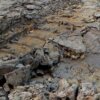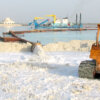Stiff clays or silts can be dredged by backhoe, trailing suction hopper or cutter suction dredgers which will influence the properties of the material.
Dredging Stiff Clays with a trailer
Dredging stiff clay or silt dredged with a trailing suction hopper dredger will have rather low production rates. An important fraction of the stiff clay/silt will disintegrate into fines. These fines do not settle well in the hopper but will be discharged back into the dredge area through the overflow system of the dredger. The remaining clay lumps will settle in t. If the clay has high plasticity, discharging the load from the hopper may be difficult because the material will stick to the walls of the hopper.
Dredging Stiff Clays with a backhoe dredger
When dredging stiff clay with a backhoe dredger large lumps form. The lumps will be loaded into a split-hull hopper barge and discharged or disposed in the reclamation areas. Almost no disintegration occurs and no slurry will be generated.
Dredging Stiff Clays with a cutter suction dredger
When dredging stiff clay/ silt with a cutter suction dredger, the clay/silt will initially be cut into pieces by the cutter head. The cut-up material will be loaded into barges or hydraulically transported through pipelines to the discharge area.
During this discharge process, the clay/silt lumps erode into clay balls and the eroded particles will mix with process water and form low density slurry.
Consolidation process
The consolidation process of fill with clay lumps or balls occurs in two separate stages:
- initial settlement results from the rearrangement of the clay lumps and is a rather quick process that generates the greatest part of settlement and occurs during the construction period;
- the second phase is the settlement of the clay lump material itself.
Based on research, the following conclusions have been reported about lumpy clay fills:
- the higher the initial shear strength of the clay, the larger the initial settlement;
- the higher the initial shear strength, the lower the settlement that occurs after the initial settlement;
- round lumps show less initial settlement; and
- the larger the lump, the larger the initial settlement.
In view of the rapid initial consolidation of a clay ball structure, the application of a surcharge is a very effective way of anticipating future settlement during the design lifetime of the reclamation area.



